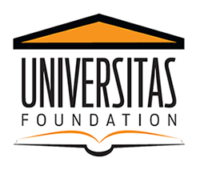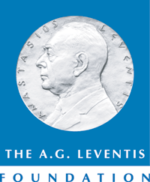Marine Debris
PLASTICMED Project
The increasing accumulation of plastic and other debris at sea is a problem that threatens not only fish and marine life but also human health. As time goes by plastics at sea gradually decompose into smaller fragments. If consumed by zooplankton, microplastics can eventually enter the food chain running the risk of becoming part of human diet. Moreover, derelict fishing nets at sea can trap dolphins or turtles often posing a life threatening danger. As a community, we are charged with the moral responsibility of devising new approaches that can help safeguard our oceans from anthropogenic littering.
Current and past efforts to address the problem of plastics at sea largely rely on manually observing, counting and reporting floating plastic debris while on-board marine vessels. PLASTICMED proposes the application of a novel method for identifying, tracing, and quantifying macroscopic and microscopic marine debris.
One of the proposed goals of the PLASTICMED project is to develop a smart method for recording and classifying different forms of marine debris at sea. This will be achieved by capturing, with the aid of a camera, videos of marine debris and then subsequently applying image processing and object classification to categorize the different forms of marine debris at sea. The most common forms of litter at sea comprise plastic buckets, plastic bottles, fishing nets, plastic bags, polystyrene, buoys and plastic fishing gear. Having collected images of these marine debri types we have built an image database whose purpose is to help attain better accuracy in terms of marine debris identification. Preliminary results were obtained from different detectors and descriptors such as SURF, BRISK, FAST, HARRIS, and others, as illustrated in the figure below. Furthermore, using the “bag of features” algorithm we have built a classifier and tested its abilities in classifying the objects from the abovementioned categories. Currently, we are testing the capabilities of deep-learning approaches to the problem of detecting floating debris at sea.

Project details. PLASTICMED is jointly funded by the Universitas Foundation, the A. G. Leventis Foundation and the University of Nicosia.
 |  |  |
Commencement date: April 2017-
Research Team: Ms. Kyriaki Kylili, Dr Alessandro Artusi, Dr. Constantinos Hadjistassou, Ms Cathy Teng, Ms. Despo Kyriakoudi
Publications:
Teng C., Kylili K., Hadjistassou C. Deploying Deep Learning to Estimate the Abundance of Marine Debris from Video Footage, Marine Pollution Bulletin, 183, 114049, pp. 10, 2022; DOI: https://doi.org/10.1016/j.marpolbul.2022.114049
Kylili K., Artusi A., Hadjistassou C. A New Paradigm for Estimating the Prevalence of Plastic Litter in the Marine Environment, Marine Pollution Bulletin, 173, Part B, 113127, pp. 8, Dec. 2021; DOI: https://doi.org/10.1016/j.marpolbul.2021.113127
Kylili, K., Kyriakides, I., Artusi, A., Hadjistassou, C., Identifying floating plastic marine debris using a deep learning approach. Environmental Science & Pollution Research. pp. 9, 2019; DOI: https://doi.org/10.1007/s11356-019-05148-4
Kylili K., Hadjistassou C., Artusi A., An Intelligent Way for Discerning Plastics at the Shorelines and the Seas. Environmental Science & Pollution Research. pp. 19, 2020; DOI: https://doi.org/10.1007/s11356-020-10105-7
Poster; 6th Int’l Marine Debris Conference, California, US; March, 2018
Video explaining the scale of plastic pollution littering the Cypriot beaches:
Video [in Greek]:
Related Material:
- The Scale of Plastic Pollution Littering the Cypriot Beaches
- Infographic Displaying Sources of Marine Debris
- Raising Public Awareness about Plastic Debris at Sea
- Θέση Πρακτικής Άσκησης (internship)
- Can Artificial Intelligence (AI) Help Address the Problem of Marine Debris?
- Classifying and Identifying Floating Marine Debris
Sample Images and Deep Learning Code:
• Code
